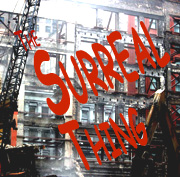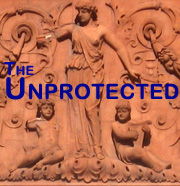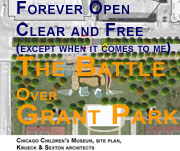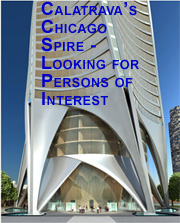This is your underpass on LSD (original) (raw)
Is there a more destructive - and more ignored -bit of urban infrastructure than the underpass?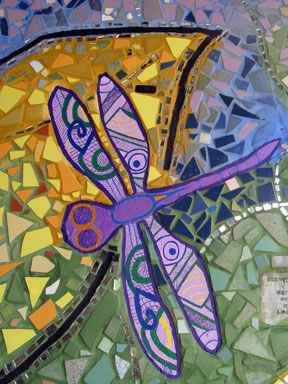
Underpasses stink. And I'm not sure I really want to know what that smell is. Underpasses bring a bit of the frightening dark alley to the street near you. Step gingerly around the broken glass, the discarded bits of garbage - newspapers, boxes, candy wrappers. Be careful not to slip on the pigeon droppings. Enjoy the ambiance of crumbling concrete, rust stains, exposed rebar, grime and various other oozing, slimy substances too yucky to contemplate.
Every so often, however, you find an exception. The latest, in Edgewater, rescues an underpass through the technique of bricolage. And no, it's not referring to the motel at Legoland. Just as it sounds, it comes from the French, meaning, loosely translated, do-it-yourself from whatever you have at hand.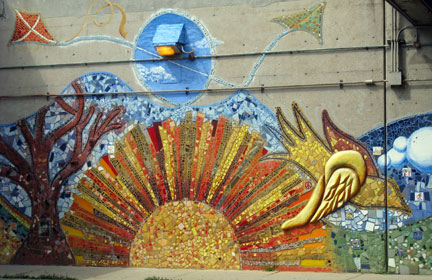
In Edgewater, bricolage was used to transform the Bryn Mawr underpass beneath Lake Shore Drive. Chicago Public Art Group artists Tracy Van Duinen and Todd Osborne worked with youths from Alternatives, Inc. and other volunteers, nearly 400 in all, to create enormous, colorful mosaics made up of thousands of pieces of mirror, concrete, clay and colored tile.
The first mural, Living 2007, 15 feet high and 185 long, was completed last year along the northern wall of the underpass. Earlier this month, Mayor Richard M. Daley and 48th Ward Alderman Mary Ann Smith dedicated Growing 2008, a second spectacular mosaic covering the south wall of the underpass. The reported cost of $80,000 was largely covered by Smith's aldermanic funds, with other contributions from the community.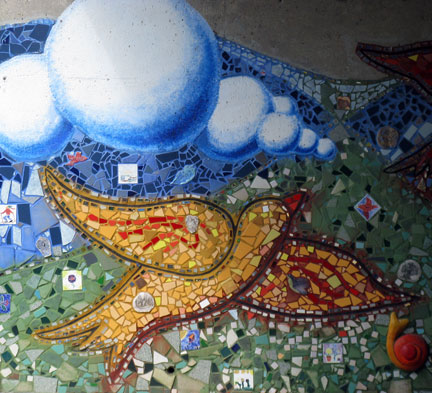
The murals are a portrait of the Edgewater community, from the vivid, whimsical and sometimes super-sized flowers, insects and flora . . .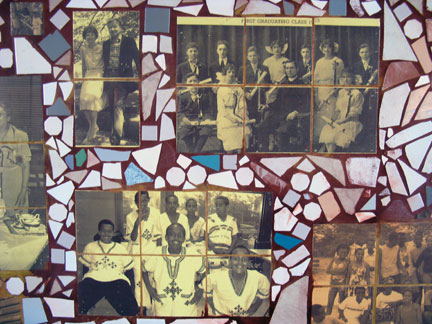
. . . to vintage photographs of residents in past times.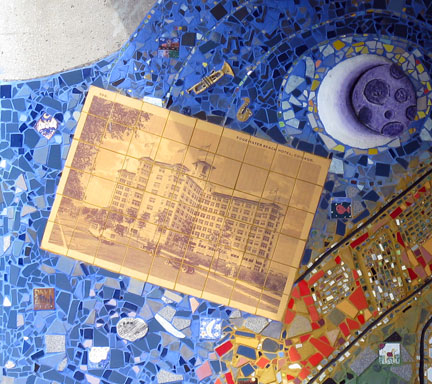
There's also small panels on many of Edgewater's most prominent buildings, including the late Edgewater Beach Hotel, built in 1916 when the community was, literally, at the water's edge. With its own private beach and seaplane service to the Loop, Marshall and Fox's Edgewater Beach was one of Chicago's most glamorous hotels until the extension of Lake Shore Drive in 1954 cut it off from the beach and started a long decline that would see the hotel's closing and demolition in 1967.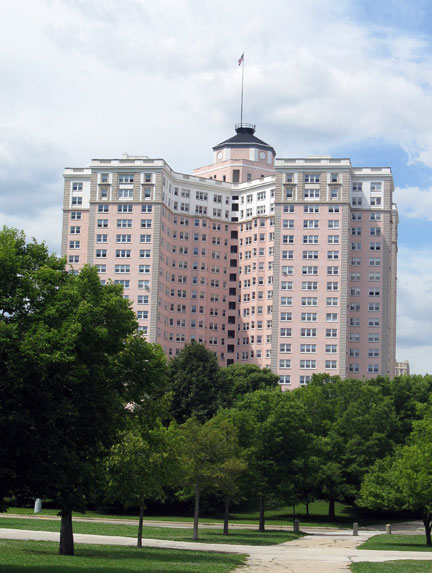
Today, the pink palace of the 1928 Edgewater Beach Apartments is the surviving reminder of its lost sister.
Other buildings depicted on the murals are alive and thriving, such as the Manor House at 1021-29 Bryn Mawr, designed by J. E. O. Pridmore in 1908 as the Prince of Wales House when the building served as the residence of the British counsel, whose coat of arms still survives in good Chicago terra cotta.
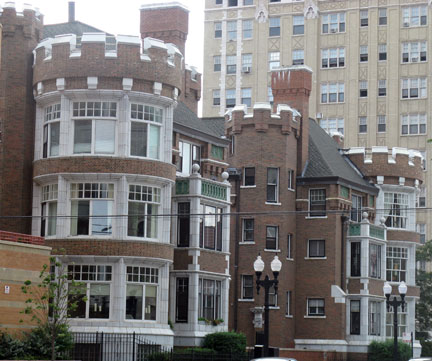
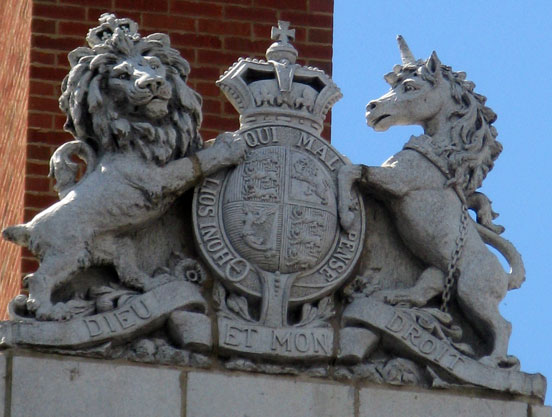
Also featured is Koenigsberg & Weisfeld's Belle Shore Apartments at 1062 Bryn Mawr. Along with its handsomely detailed facades, the hotel was recently renovated and restored after long decades of neglect.
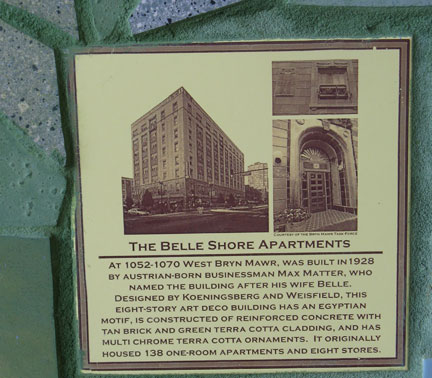
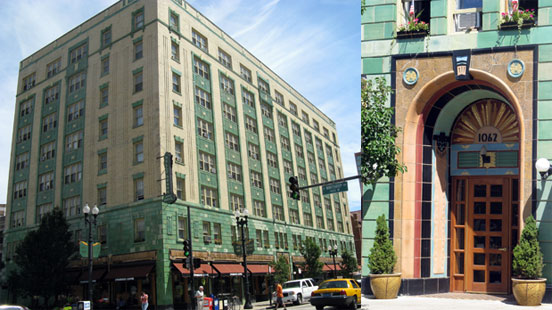
Most often, underpasses are little more than the afterbirth of an overpass created to carry traffic over an obstruction. As such, they have a pronounced proclivity towards blighting up a neighborhood. It's as if the people using the underpass are being punished for making it necessary. Rarely is any attention given to designing ways to make underpasses less of an urban black hole, sucking up light and energy.
Yet, except when they're essentially dead ends (it happens, especially in industrial areas), underpasses are also important gateways. In the case of Lake Shore Drive, they're the gateways to Chicago's glorious lakefront and, too often, the gauntlet you have to pass through, like purgatory, to get there. Once they reach a certain level of squalor, they effectively begin to function as walls, as barriers ripping apart the urban fabric.
The bricolages at Bryn Mawr, as wonderful as they are, aren't a universal solution, but they open the door not only to other solutions, but to waking up to a corrosive urban design problem that, traditionally, has simply been swept under the viaduct.

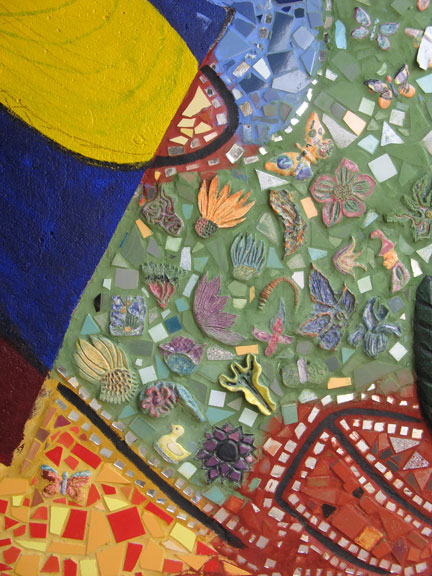
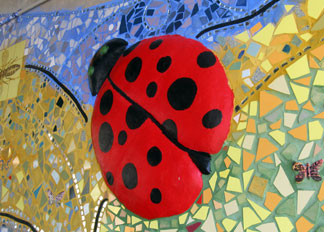

Join a discussion on this story.
© 2008 photos and text Lynn Becker All rights reserved.


